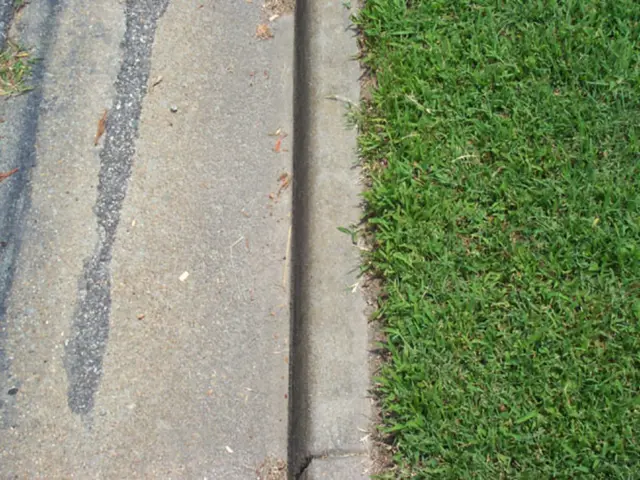Distinguishing Age Spots from Skin Cancer: Recognizing the Differences
Hey there! Let's dive into the contrast between age spots and skin cancer. Both conditions can appear similar but have some key differences that can help you figure out which one you've got.
Age spots, also known as liver spots, are harmless darker patches on the skin that result from your body producing an overabundance of melanin to protect the skin from sun damage. Unlike skin cancer, they don't need treatment or removal. They generally look flat, smooth, and can be dark yellow, brown, or gray. They usually appear as you age, particularly on sun-exposed areas like your face, hands, shoulders, and arms.
Skin cancer, though, is a type of cancer that develops as a result of sun damage or other environmental factors causing damage to skin cells. These malignant growths can also show up on sun-exposed areas, but they're harmful and may spread to other parts of the body.
There are three common types of skin cancer: basal cell carcinoma, squamous cell carcinoma, and melanoma. Another possible skin mark that could be mistaken for an age spot is actinic keratosis, a precancerous growth that occurs due to sun damage.
Although age spots and skin cancer may look alike, here's how they differ:
Age spot symptoms
- Smooth, flat, and well-defined
- Single clusters or scatterings of varying sizes
- Color varies from brown to black
- They're painless and don't itch
Skin cancer symptoms
- Growths that are irregular in shape, color, and border
- May be asymmetrical, change in size, color, or texture
- Multi-colored with multiple shades within the same spot
- Raised, red, pink, purple, black, or blue areas
- Oozing, bleeding, itching, or scabbing in later stages
If you're ever unsure about a new or changing mark on your skin, don't hesitate to consult a healthcare professional. Catching skin cancer early can significantly improve your treatment outcomes. Keep in mind that age spots require no treatment, but you might opt for removal to reduce their appearance.
Treatment for skin cancer and actinic keratosis may vary depending on their type, stage, and your situation, and may include topical therapies, radiation therapy, chemotherapy, immunotherapy, or systemic medication. Removal options for age spots include creams, lotions, or procedures like laser treatments, cryosurgery, microdermabrasion, and chemical peeling.
In summary, knowing the key differences between age spots and skin cancer can help you identify when you might need medical attention. Monitor any unusual changes to your skin and seek medical advice if a mark seems suspicious. Early detection is essential for skin cancer treatment, while age spots require no treatment unless you want to reduce their appearance.
- Senior individuals may find it beneficial to prioritize regular dermatology check-ups, as they are at a higher risk of developing skin cancer due to prolonged sun exposure.
- Skin cancer is not limited to just melanoma; basal cell carcinoma and squamous cell carcinoma are other common types of skin cancer that can form due to sun damage or other environmental factors.
- In the realm of health-and-wellness, it's crucial to keep up with skin care and skin-condition monitoring, especially when it comes to identifying and treating medical-conditions like skin cancer and age spots.
- Various treatment options are available for the removal of age spots or the treatment of skin cancer, including topical therapies, radiation therapy, chemotherapy, immunotherapy, systemic medication, and procedures like laser treatments, cryosurgery, microdermabrasion, and chemical peeling.
- The science behind these treatments continues to evolve, with ongoing research in oncology and dermatology aimed at improving the outcomes and effectiveness of skin cancer treatment for patients.








